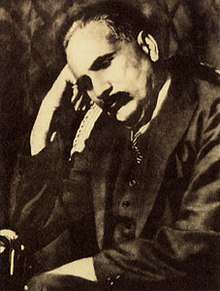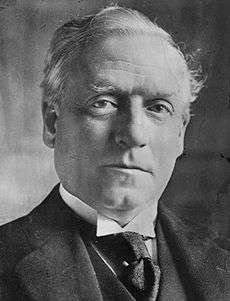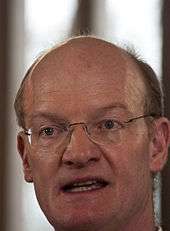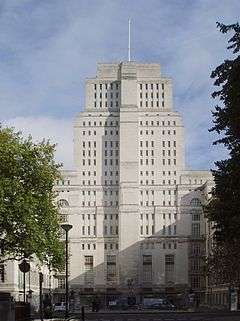City, University of London
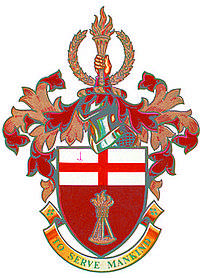 Old Arms of City, University of London | ||||||||||||||||
| Motto | To Serve Mankind | |||||||||||||||
|---|---|---|---|---|---|---|---|---|---|---|---|---|---|---|---|---|
| Type | Public Research University | |||||||||||||||
| Established |
1852: Inns of Court School of Law 1894: Northampton Institute 1966: Gained University Status by Royal Charter 2016: Constituent College of University of London | |||||||||||||||
| Endowment | £5.2 million (as of 31 July 2017)[1] | |||||||||||||||
| Budget | £227.0 million (2016–17)[1] | |||||||||||||||
| President | Sir Paul Curran | |||||||||||||||
| Rector | Lord Mayor of the City of London ex officio | |||||||||||||||
| Students | 19,405 (2016/17)[2] | |||||||||||||||
| Undergraduates | 10,075 (2016/17)[2] | |||||||||||||||
| Postgraduates | 9,330 (2016/17)[2] | |||||||||||||||
| Location |
London, United Kingdom 51°31′40″N 0°06′08″W / 51.52776°N 0.10226°WCoordinates: 51°31′40″N 0°06′08″W / 51.52776°N 0.10226°W | |||||||||||||||
| Campus | Urban | |||||||||||||||
| Colours |
Red and White | |||||||||||||||
| Affiliations |
University of London Association of MBAs EQUIS Universities UK | |||||||||||||||
| Website |
www | |||||||||||||||
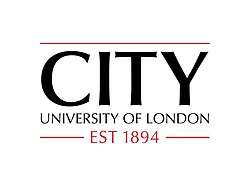 | ||||||||||||||||
City, University of London is a public research university in London, United Kingdom. Until 2016, it was known as City University, London.
It was founded in 1894 as the Northampton Institute and became a university when The City University was created by royal charter in 1966.[3] The Inns of Court School of Law, which merged with City in 2001, was established in 1852, making it the former City University's oldest constituent part.[4] On 1 September 2016, City joined the federal University of London, becoming part of the 18 Colleges and ten research institutes that make up the University.[5] The university has strong links with the City of London, and the Lord Mayor of London serves as the University's Rector.[6][7]
City, University of London, has its main campus in central London in the Islington borough, with additional campuses in Islington and across the City of London, the West End and East End of London. It is organised into seven schools, within which there are around 40 academic departments and centres, including: the Department of Journalism, the Cass Business School, and City Law School which incorporates the Inns of Court School of Law.[8]
The annual income of the institution for 2016–17 was £227.0 million of which £11.6 million was from research grants and contracts, with an expenditure of £221.4 million.[1] Cass Business School is ranked 5th in the UK and top 40 in the world in the Financial Times' 2017 Global MBA Rankings.[9] City, University of London, is a member of the Association of MBAs, EQUIS and Universities UK.
History
Origins

City University traces its origin to the Northampton Institute, established in 1852 and named after the Marquess of Northampton who donated the land on which the institute was built, between Northampton Square and St John Street in Islington. The institute was established to provide for the education and welfare of the local population. It was constituted under the City of London Parochial Charities Act (1883), with the objective of "the promotion of the industrial skill, general knowledge, health and well-being of young men and women belonging to the poorer classes".[10]
Northampton Polytechnic Institute was an institute of technology in Clerkenwell, London, founded in 1894. Alumni include Colin Cherry, Stuart Davies and Anthony Hunt.[11] Arthur George Cocksedge, a British gymnast who competed in the 1920 Summer Olympics, was a member of the Northampton Polytechnic Institute's Gymnastics Club and was Champion of the United Kingdom in 1920. In 1937 Maurice Dennis of the (Northampton Polytechnic ABC) was the 1937 ABA Middleweight Champion. Frederick Handley Page was a lecturer in aeronautics at the institute. The Handley Page Type A, the first powered aircraft designed and built by him, ended up as an instructional airframe at the school. The novelist Eric Ambler studied engineering at the institute.
The six original departments at the institute were Applied Physics and Electrical Engineering; Artistic Crafts; Domestic Economy and Women's Trades; Electro-Chemistry; Horology (the science of time and art of clock-making); and Mechanical Engineering and Metal Trades.
20th century
In 1903–04 a separate technical optics department was established. In 1909 the first students qualified for University of London BSc degrees in engineering as internal students.[10] Since 1909 the institute had been involved in aeronautics education, and in 2009 the School of Engineering and Mathematical Sciences celebrated the centenary of aeronautics at City.[12] In 1908 the Institute was used for the Olympic Games.[10] Boxing took place at the Institute.[13]
The institute was designated a "College of Advanced Technology" in 1957.[10]
In 1961 the institute's involvement in information science began with the introduction of a course on "Collecting and Communicating Scientific Knowledge". In 1966 City received its royal charter, becoming "The City University" to reflect the institution's close links with the City of London.[14] In 1971 the Apollo 15 astronauts visited City and presented the Vice-Chancellor, Tait, with a piece of heat shield from the Apollo 15 rocket.[15]
In October 1995 it was announced that City University would merge with both the St Bartholomew School of Nursing & Midwifery and the Charterhouse College of Radiography, doubling the number of students in City's Institute of Health Sciences to around 2,500.[16]
21st century
The University formed a strategic alliance with Queen Mary, University of London, in April 2001.[17] In May 2001, a fire in the college building gutted the fourth floor offices and roof.[18] In August 2001 City and the Inns of Court School of Law agreed to merge.[19] Following a donation from Sir John Cass's Foundation, a multimillion-pound building was built at 106 Bunhill Row for the Cass Business School.[20]
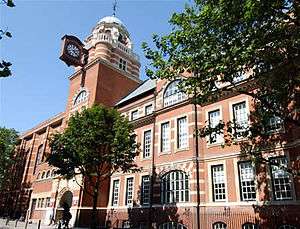
A new £23 million building to house the School of Social Sciences and the Department of Language and Communication Science was opened in 2004. The reconstruction and redevelopment of the university's Grade II listed college building (following the fire in 2001) was completed in July 2006.
In 2007 the School of Arts received a £10m building refurbishment. A new students' union venue opened in October 2008 called "TEN squared", which provides a hub for students to socialise in during the day and hosts a wide range of evening entertainment including club nights, society events and quiz nights.
In January 2010, premises were shared with the University of East Anglia (UEA) London, following City's partnership with INTO University Partnerships. Since then City has resumed its own International Foundation Programme to prepare students for their pre-university year. In April 2011, it was announced that the current halls of residence and Saddler's Sports Centre will be closed and demolished for rebuilding in June 2011. The new student halls and sports facility, now known as CitySport, opened in 2015.
In September 2016 City University, London became a member institution of the federal University of London[5] and changed its name to City, University of London.
Campus

City has sites throughout London,[21] with the main campus located at Northampton Square in the Finsbury area of Islington. The Rhind Building which houses the School of Arts and Social Sciences is directly west of Northampton Square. A few buildings of the main campus are located in nearby Goswell Road in Clerkenwell.
Other academic sites are:
- City Law School (incorporating Inns of Court School of Law) in Holborn, Camden
- Sir John Cass Business School in St Luke's, Islington, and at 200 Aldersgate in Smithfield, City of London
- INTO City in Spitalfields, Tower Hamlets
Organisation and administration
.jpg)
The Rector of City, University of London, is the Lord Mayor of the City of London ex officio. The day-to-day running of the university is the responsibility of the President. The current President is Professor Sir Paul Curran.
Schools
City, University of London is organised into five schools:
- City Law School, incorporating Inns of Court School of Law
- School of Health Sciences, incorporating St Bartholomew School of Nursing & Midwifery
- School of Arts and Social Science, including the Department of Journalism
- School of Mathematics, Computer Science and Engineering
- Sir John Cass Business School
Finances
In the financial year ended 31 July 2011, City had a total income (including share of joint ventures) of £178.6 million (2008/09 – £174.4 million) and total expenditure of £183.62 million (2008/09 – £178.82 million).[22] Key sources of income included £39.58 million from Funding Council grants (2008/09 – £39.52 million), £116.91 million from tuition fees and education contracts (2008/09 – £104.39 million), £7.86 million from research grants and contracts (2008/09 – £9.29 million), £1.04 from endowment and investment income (2008/09 – £1.83 million) and £15.05 million from other income (2008/09 – £19.37 million).[22]
During the 2010/11 financial year, City had a capital expenditure of £9.77 million (2008/09 – £16.13 million).[22]
At year end, City had reserves and endowments of £112.89 million (2009/10 – £110.05 million) and total net assets of £147.64 million (2008/09 – £147.27 million).[22]
Academic profile
Courses and rankings
Global rankings | ||
| ARWU[23] (2018) | 901–1000 | |
|---|---|---|
| QS[24] (2019) | 351 | |
| THE[25] (2019) | 351–400 | |
| Complete[26] (2019) |
66 | |
| The Guardian[27] (2019) |
95 | |
| Times / Sunday Times[28] (2019) |
68 | |
British Government assessment | ||
| Teaching Excellence Framework[29] | Silver | |
City, University of London, offers Bachelor's, Master's, and Doctoral degrees as well as certificates and diplomas at both undergraduate and postgraduate level. More than two thirds of City's programmes are recognised by the appropriate professional bodies such as the BCS, BPS, CILIP, ICE, RICS, HPC etc. in recognition of the high standards of relevance to the professions. The University also has an online careers network where over 2,000 former students offer practical help to current students.[30]
The City Law School offers courses for undergraduates, postgraduates, master graduates and professional courses leading to qualification as a solicitor or barrister, as well as continuing professional development. Its Legal Practice Course has the highest quality rating from the Solicitors Regulation Authority.[31]
The Department of Radiography (part of the School of Community and Health Sciences) offers two radiography degrees, the BSc (Hons) Radiography (Diagnostic Imaging) and BSc (Hons) Radiography (Radiotherapy and Oncology), both of which are recognised by the Health Professions Council (HPC).
Partnerships and collaborations
CETL
Queen Mary, University of London, and City, University of London, were jointly awarded Centre for Excellence in Teaching and Learning (CETL) status by the Higher Education Funding Council for England (HEFCE) in recognition of their work in skills training for 3,000 students across six healthcare professions.[32]
City of London
City, University of London, has links with businesses in the City of London.[33] City has also joined forces with other universities such as Queen Mary and the Institute of Education (both part of the University of London) with which it jointly delivers several leading degree programmes.
LCACE
London Centre for Arts and Cultural Exchange is a consortium of nine universities. It was established in 2004 to foster collaboration and to promote and support the exchange of knowledge between the consortium's partners and London's arts and cultural sectors. The nine institutions involved are: University of the Arts London; Birkbeck, University of London; City, University of London; The Courtauld Institute of Art; Goldsmiths, University of London; Guildhall School of Music & Drama; King's College London; Queen Mary, University of London, and Royal Holloway, University of London.
Simfonec
Simfonec is a collaborative Science Enterprise Centre (SEC) for the exploitation and transfer of knowledge, ideas and resources among three key sectors – academic, financial and Small and Medium Enterprises (SMEs). Simfonec encourages the development of an entrepreneurial outlook amongst researchers in science and technology and orchestrates the delivery of science ideas to the commercial marketplace. It is a partnership between four of London universities (Royal Veterinary College, King's College London, Queen Mary, University of London, and City, University of London). It was launched in March 2003 by the Department of Trade and Industry.
Willis Towers Watson Research Network
In September 2006, City joined the Willis Towers Watson Research Network (WTWRN), a major, long-term partnership between leading international scientific institutions (including the universities of Bristol, Cambridge, Durham and Imperial College London) and the global insurance broker Willis Towers Watson. The purpose of the network is to evaluate the frequency, severity and impact of catastrophes such as hurricanes, earthquakes, floods and terrorism.
WC2 University Network
City is a founding member of the WC2 University Network, a network of universities developed with the goal of bringing together leading universities located in the heart of major world cities in order to address cultural, environmental and political issues of common interest to world cities and their universities.[34] In addition to City, University of London, the founding members of WC2 members are: City University of New York, Technische Universität Berlin, Universidade de São Paulo, Hong Kong Polytechnic University, Universidad Autonoma Metropolitana, Saint Petersburg State Polytechnical University, Politecnico di Milano, University of Delhi, Northeastern University Boston and Tongji University.
Erasmus Mundus MULTI
City was selected as the sole British university to take part in the selective Erasmus Mundus MULTI programme, funded by the European Commission to promote scientific exchange between Europe and the industrialised countries of South-East Asia. It is the first Erasmus program to involve universities outside of Europe. In addition to City, the partner universities are: Aix-Marseille University (France), Univerzita Karlova v Praze (Czech Republic), Freie Universität Berlin (Germany), Universität des Saarlandes (Germany), Università di Pisa (Italy), Universidad de Sevilla (Spain), The Hong Kong Polytechnic University (Hong Kong, SAR China), Universiti Brunei Darussalam (Brunei), University of Macau (Macau, SAR China), Nanyang Technological University (Singapore), and National Taiwan University (Taiwan).
UCL Partners
City has joined the executive group of UCL Partners, one of five accredited academic health science groups in the UK. City was invited to join the partnership in recognition of its expertise in nursing, allied health, health services research and evaluation and health management.[35]
Spin-out companies
City Technology plc
City is the birthplace of City Technology plc, which is the world's leading manufacturer of fuel-cell gas sensors used in worker safety, automotive, medical and emissions monitoring applications. City Technology plc was previously listed on the London Stock Exchange but was acquired by Honeywell in March 2006.
Student life
Students' Union
The City Students' Union is run primarily by students through three elected Sabbatical Officers, an Executive Committee and a Union Council, with oversight by a Trustee Board. The Students Union provides support, representation, facilities, services, entertainment and activities for its members. It is run for students by students.[36]
Student media
City currently has two student media outlets. Both student are student run including Carrot Radio, which currently records weekday podcasts. The second is the student led online magazine, The Howl. They recently released their first print magazine in December 2017.
Other
For a number of years, City students have taken part in the annual Lord Mayor's Show, representing the university in one of the country's largest and liveliest parades.
People & Planet University League
City ranked 7th out of the 168 universities surveyed in the 2016 People & Planet league table of the most sustainable UK universities. It was the highest ranking University of London institution, and one of only two in the top twenty (LSE being 14th).[37]
The league table's Fossil Free Scorecard report, drawn from Freedom of Information requests, found that £800,000 (6.4%) of City's £12.5m endowment was invested in fossil fuels, and that the institution had not made a public commitment to fossil fuel divestment. It also noted nearly £1m of research funding into renewables since 2001 with just £64k of total funding from fossil fuel companies; and no honorary degrees or board positions held by fossil fuel executives.[38]
Notable people
Notable alumni
Arts, science and academia
- L. Bruce Archer – British mechanical engineer and Professor of Design Research at the Royal College of Art
- John Brignell – former professor of Industrial Instrumentation, science author
- George Daniels – Horologist, regarded as the greatest watchmaker of modern times and inventor of the coaxial escapement
- Jerry Fishenden – technologist, former Microsoft National Technology Officer for the UK[39]
- Julia Gomelskaya – Ukrainian contemporary music composer, professor of Odessa State Music Academy in Ukraine
- Norman Gowar – Professor of Mathematics at the Open University and Principal of Royal Holloway College, University of London
- David Hirsh – Academic and sociologist
- Muhammad Iqbal – Muslim poet, philosopher and politician, born in present-day Pakistan, graduated from the Inns of Court School of Law and University of Cambridge
- John Loder – sound engineer, record producer and founder of Southern Studios, as well as a former member of EXIT
- Sharon Maguire – director of Bridget Jones's Diary
- Rhodri Marsden – Journalist, musician and blogger; columnist for The Independent
- Robin Milner – computer scientist and recipient of the 1991 ACM Turing Award
- John Palmer – instrumental and electroacustic music composer
- Ziauddin Sardar – Academic and scholar of Islamic issues, Commissioner of the Equality and Human Rights Commission
- Kevin Smith – Chartered Engineer; Notable leader in the regeneration of the Great Eastern Hotel, London
Government, politics and society
- Clement Attlee – Labour Prime Minister of the United Kingdom from 1945 to 1951
- Herbert Henry Asquith – Liberal Prime Minister of the United Kingdom from 1908 to 1916
- Tony Blair – Labour Party Prime Minister of the United Kingdom from 1997 to 2007, graduated from the Inns of Court School of Law
- Muhammad Ali Jinnah – founder of Pakistan, first Governor-General of Pakistan graduated from the Inns of Court School of Law
- Roderic Bowen – Welsh Liberal Party politician
- Robert Chote - chief of the Office for Budget Responsibility; former director of Institute for Fiscal Studies
- Ali Dizaei - former police commander
- Jody Dunn – Liberal Democrat politician, and a barrister specialising in family law
- Sir James Dutton – Royal Marine general and former deputy commander of the International Security Assistance Force
- Chloë Fox – Australian politician, former Labor MP for the South Australian electoral district of Bright
- Syed Sharifuddin Pirzada – Noted Pakistani lawyer & Politician. Also served as 5th secretary general of Organisation of Islamic Cooperation.
- Mahatma Gandhi - Leader of the Indian Independence Movement, graduated 1891 from City Law School (Inns of Court School of Law)
- James Hart – Commissioner of the City of London Police
- David Heath – Politician and Liberal Democrat Member of Parliament for Somerton and Frome
- Syed Kamall – Conservative Party politician and Member of the European Parliament for the London European Parliament constituency
- David Lammy – Labour MP for Tottenham
- Liu Mingkang – Chinese Politician and Businessman, current Chairman of the China Banking Regulatory Commission, former Vice-Governor of the China Development Bank
- Jawaharlal Nehru – First Prime Minister of the Republic of India
- Houda Nonoo – Bahraini Ambassador to the United States
- Patrick O'Flynn – UK Independence Party MEP
- Stav Shaffir – Youngest member of the Israeli Knesset, leader of the social justice movement
- Aris Spiliotopoulos – Minister of Greek Tourism
- Margaret Thatcher – Conservative Party Prime Minister of the United Kingdom from 1979 to 1990, graduated from the Inns of Court School of Law
- Ivy Williams – First woman to be called to the English bar
Business and finance
- Winston Set Aung - Politician, Economist and Management Consultant, incumbent Deputy Governor of the Central Bank of Myanmar
- Brendan Barber – General Secretary of the Trades Union Congress[40]
- Jonathan Breeze – Founder and CEO of Jet Republic, private jet airline company in Europe[41]
- William Castell – former Chairman of the Wellcome Trust and a Director of General Electric and BP, former CEO of Amersham plc[41]
- Peter Cullum – British entrepreneur
- James J. Greco – former CEO and President of Sbarro
- Sir Stelios Haji-Ioannou – Founder of easyGroup
- Bob Kelly – former CEO of Bank of New York Mellon and CFO of Mellon Financial Corporation and Wachovia Corporation
- Muhtar Kent – CEO of The Coca-Cola Company
- William Lewis – CEO Dow Jones Publisher, The Wall Street Journal[42]
- Ian Livingstone – Chairman and co-owner, London & Regional Properties[43]
- Liu Mingkang - former Chairman of the China Banking Regulatory Commission[44]
- Dick Olver – former Chairman of BAE Systems, member of the Board of Directors at Reuters
- Syed Ali Raza – former President and Chairman of the National Bank of Pakistan
- Martin Wheatley - former CEO of the Financial Conduct Authority
- Brian Wynter – Governor of the Bank of Jamaica[41]
- Durmuş Yılmaz – Governor of the Central Bank of Turkey
Media and entertainment
- Samira Ahmed - Channel 4 News presenter, BBC News presenter, writer and journalist
- Joanna Blythman – Non-fiction writer, Britain's leading investigative food journalist[41]
- Emily Buchanan – BBC World Affairs correspondent
- Ellie Crisell – BBC Presenter[41]
- Imogen Edwards-Jones – Novelist
- Gamal Fahnbulleh – Sky News Presenter and journalist
- Michael Fish – BBC weatherman
- Adam Fleming – CBBC Reporter
- Lourdes Garcia-Navarro – Journalist, Jerusalem foreign correspondent for National Public Radio (NPR)
- Alex Graham – Chairman of PACT and the Scott Trust
- Michael Grothaus – Novelist and journalist; author of Epiphany Jones
- Gillian Joseph – Sky News Presenter
- Kirsty Lang – BBC Presenter and journalist
- Ellie Levenson – Freelance Journalist and Author
- William Lewis – Journalist and editor of the Daily Telegraph
- Donal MacIntyre – Investigative journalist
- Sharon Maguire – Writer and Director, directed Bridget Jones's Diary
- Rhodri Marsden – Journalist, musician and blogger; columnist for The Independent
- Sharon Mascall – Journalist, broadcaster and writer; lecturer at the University of South Australia
- Lucrezia Millarini - Freelance Journalist and ITV News Reader
- Dermot Murnaghan – Presenter on Sky News
- Tiff Needell – Grand Prix driver, Presenter of Fifth Gear on Five
- Nishat Monsur - British singer, musician and writer.
- Linda Papadopoulos – Psychologist, appearing occasionally on TV
- Catherine Pepinster – journalist, religion writer
- Raj Persaud – British consultant psychiatrist, broadcaster, and author on psychiatry
- Richard Preston – Novelist
- Gavin Ramjaun – Television presenter and journalist
- Sophie Raworth – Newsreader, presenter on BBC One O'Clock News
- Apsara Reddy — journalist
- Joel Rubin – World-renowned klezmer clarinetist[41]
- Ian Saville – British magician[41]
- Barbara Serra –presenter for Al Jazeera from London[41]
- Sarah Walker – BBC Radio 3 presenter
- Mark Worthington – BBC Correspondent
- Maryam Nemazee –presenter for Al Jazeera from London
Notable faculty and staff
- Rosemary Crompton - Professor of Sociology
- Roy Greenslade – Journalist
- Steven Haberman – Professor of Actuarial Science at City, University of London
- Rosemary Hollis – Professor of International Politics at City, University of London
- Jamal Nazrul Islam – Physicist, Mathematician, Cosmologist, Astronomer
- David Leigh – Journalist
- Penny Marshall – Journalist
- David Marks – Psychologist
- Stewart Purvis – Broadcaster
- Denis Smalley – Composer
- Bill Thompson – Journalist
- David Willets – Conservative Member of Parliament for Havant; Shadow Secretary of State for Education and Skills
Vice-Chancellors
- 1966–1974: Sir James Sharp Tait
- 1974–1978: Sir Edward W. Parkes
- 1978–1998: Raoul Franklin
- 1998–2007: David William Rhind
- 2007–2009: Malcolm Gillies
- 2009–2010: Julius Weinberg (acting)
- 2010–present: Sir Paul Curran
In popular culture
City University's Bastwick Street Halls of Residence in Islington was the first home of the MasterChef kitchen following its 2005 revival.[45][46]
References
- 1 2 3 "Financial Statements for the Year to 31 July 2017" (PDF). City, University of London. Retrieved 11 January 2017.
- 1 2 3 "2016/17 Students by HE provider, level, mode and domicile" (CSV). Higher Education Statistics Agency. Retrieved 25 March 2018.
- ↑ "Royal Charter" (PDF). Retrieved 21 January 2013.
- ↑ "A History of City University London". City University London. Retrieved 1 October 2012.
- 1 2 Grove, Jack (16 July 2015). "City University London to join University of London". Times Higher Education. Retrieved 16 July 2015.
- ↑ "City, University of London". www.FindAMasters.com. Retrieved 20 November 2017.
- ↑ "The City of London and City, University of London". City, University of London. Retrieved 20 November 2017.
- ↑ "Schools and Academic Departments". City University London. Retrieved 11 December 2011.
- ↑ "Business school rankings from the Financial Times - FT.com". Retrieved 10 February 2017.
- 1 2 3 4 "Our history – City University London". City University, London. Archived from the original on 11 January 2008. Retrieved 30 January 2008.
- ↑ "University of London Students 1836-1933". Senate House Library. 30 June 1930. Archived from the original on 14 September 2010. Retrieved 2013-11-15.
- ↑ "100 years of education in aeronautics" (PDF). Royal Aeronautical Society. Retrieved 2009-06-15.
- ↑ 1908 Summer Olympics official report. p 33.
- ↑ "Progressing through change: The Recent History of City University London, 1978–2008" (PDF). Archived from the original (PDF) on 28 July 2010. Retrieved 17 July 2009.
- ↑ "Video of Apollo 15 astronauts visiting City". City University London. Archived from the original on 11 September 2009. Retrieved 15 June 2009.
- ↑ "Institute nurses health". Times Higher Education. 6 October 1995. Retrieved 31 December 2011.
- ↑ "Queen Mary, City kick off alliance". Times Higher Education. 12 April 2001. Retrieved 31 December 2011.
- ↑ Plomin, Joe (22 May 2001). "Fire destroys part of City University building". London: The Guardian. Retrieved 29 December 2011.
- ↑ "Law school to merge with City". Times Higher Education. 24 August 2001. Retrieved 29 December 2011.
- ↑ "City Business School seeks global profile". Times Higher Education. 11 May 2001. Retrieved 29 December 2011.
- ↑ "University location maps". City University London. Archived from the original on 29 April 2009. Retrieved 15 June 2009.
- 1 2 3 4 "Financial Statements for the year ended 31 July 2011" (PDF). City University London. Retrieved 24 February 2012.
- ↑ "Academic Ranking of World Universities 2018". Shanghai Ranking Consultancy. Retrieved 15 August 2018.
- ↑ "QS World University Rankings 2019". Quacquarelli Symonds Ltd. Retrieved 6 June 2018.
- ↑ "World University Rankings 2019". Times Higher Education. Retrieved 26 September 2018.
- ↑ "University League Table 2019". The Complete University Guide. Retrieved 26 April 2018.
- ↑ "University league tables 2019". The Guardian. 29 May 2018. Retrieved 29 May 2018.
- ↑ "The Times and Sunday Times University Good University Guide 2019". Times Newspapers. Retrieved 23 September 2018.
- ↑ "Teaching Excellence Framework outcomes". Higher Education Funding Council for England. Retrieved 11 June 2018.
- ↑ "City's Online Careers Network". City University London. Archived from the original on 22 April 2009. Retrieved 11 June 2009.
- ↑ "Solicitors Regulation Authority Executive Summary" (PDF). Solicitors Regulation Authority. 20 March 2007. Archived from the original (PDF) on 7 December 2010. Retrieved 11 June 2009.
- ↑ "CETL – Centre for Excellence in Teaching and Learning". Queen Mary University of London. Retrieved 2009-02-25.
- ↑ "Links with businesses". QAA. 24 May 2005. Archived from the original on 28 April 2009. Retrieved 21 December 2007.
- ↑ "WC2 University Network". City University London. Retrieved 16 July 2015.
- ↑ "Archived copy". Archived from the original on 4 November 2011. Retrieved 2 October 2011.
- ↑ https://web.archive.org/web/20110321083722/http://www.city.ac.uk/studentcentre/studentsunion/about_the_su.html. Archived from the original on 21 March 2011. Missing or empty
|title=(help) - ↑ "University League 2016". People & Planet. Retrieved 30 July 2017.
- ↑ "City, University of London People & Planet University League 2016 Scorecard". People & Planet. Retrieved 30 July 2017.
- ↑ "Microsoft UK's national technology officer moves on". Computer Weekly. Retrieved 17 December 2016.
- ↑ "Biographical details: Brendan Barber". Trades Union Congress. Archived from the original on 25 July 2012. Retrieved 24 September 2012.
- 1 2 3 4 5 6 7 8 "City University- Institution Profiles". PTC. Archived from the original on 31 January 2013. Retrieved 30 November 2012.
- ↑ "Dow Jones". DowJones.com. Retrieved 20 November 2017.
- ↑ "Ian Livingstone". Questex Hospitality+Travel Group. Archived from the original on 8 February 2015. Retrieved 8 February 2015.
- ↑ "Professor Liu".
- ↑ "MasterChef Studio".
- ↑ "MasterChef Studio".
External links
| Wikimedia Commons has media related to City University. |
